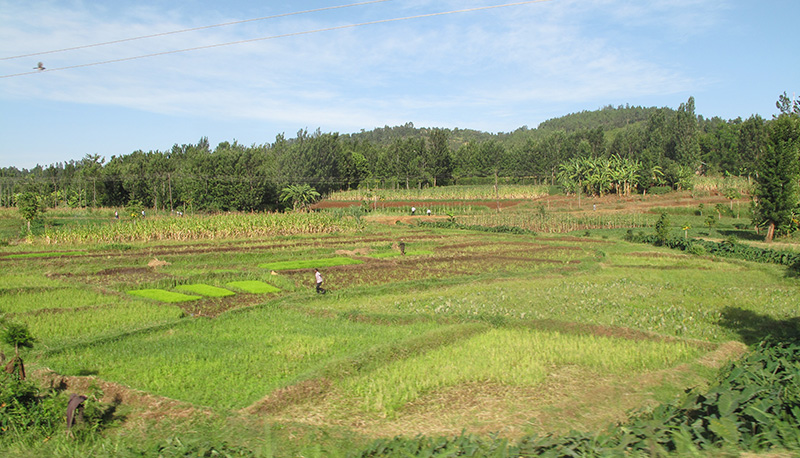Global Gridded Crop Model Intercomparison Predicts Strong Negative Effects on Agriculture from Climate Change
Jul 18, 2018
Effects strongest in areas with greatest warming and in the tropics.
Agriculture is arguably the sector most affected by climate change, but assessments differ and are thus difficult to compare. As the world’s population grows, understanding which crop types and regions will be negatively affected by climate change may make the difference between adequate food supply and food insecurity. By comparing the predictions of multiple models, scientists can assess with a higher degree of accuracy the location and amount of future climatic effects on agricultural production.
The recently released paper, “Assessing agricultural risks of climate change in the 21st century in a global gridded crop model intercomparison”, led by Cynthia Rosenzweig, Senior Research Scientist at the NASA Goddard Institute for Space Studies, in the Proceedings of the National Academy of Sciences of the United States of America (date) compares seven global gridded crop models in order to quantify the global effects of climate change major crops.

The recently released paper, “Assessing agricultural risks of climate change in the 21st century in a global gridded crop model intercomparison”, led by Cynthia Rosenzweig, Senior Research Scientist at the NASA Goddard Institute for Space Studies, in the Proceedings of the National Academy of Sciences of the United States of America (date) compares seven global gridded crop models in order to quantify the global effects of climate change major crops. The study, coordinated by the Agricultural Model Intercomparison and Improvement Project (AgMIP) as part of the Inter-Sectoral Impact Model Intercomparison Project (ISI-MIP) and led out of Columbia University and the NASA Goddard Institute for Space Studies, is the first of its kind to compare multiple global gridded crop models in order to improve the quality of global agricultural assessments.
The paper presents globally consistent, protocol-based, multi-model climate change assessments for wheat, rice, corn, and soybean. Included in the study is the level of confidence, or how much uncertainty, is associated with the assessments. Results indicate strong negative effects from climate change, especially at higher levels of warming and in the tropics where developing countries are concentrated. Simulations that include realistic nitrogen availability resulted in much more severe impacts from climate change in both temperate and tropical zones.
This implies that developing countries where nitrogen fertilization is low will have greater challenges in developing effective adaptation strategies. [A multi-dimensional ensemble was used to characterize uncertainty from global climate models, representative concentration pathways, and global gridded crop models] At the global scale, the effects of carbon dioxide, nitrogen, and higher temperature on crops are identified as major sources of model disagreement.
For the first time multiple global gridded crop models are used to show where models agree. Although there is significant agreement in the models in the lower latitude tropics and high-latitude zones, the mid-latitude temperate zones have a higher degree of uncertainty. Model improvement is required to better understand the effects of CO2, nitrogen, and high-temperatures on agricultural production in these regions and to devise targeted adaptive strategies.
